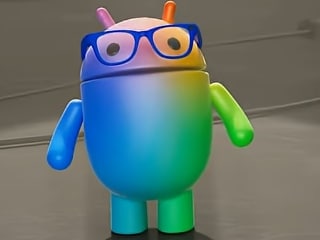- Home
- Ai
- Ai Features
- How to Not Write Like AI: These Tips Will Make Your Writing Appear Human, Not Generated From ChatGPT
How to Not Write Like AI: These Tips Will Make Your Writing Appear Human, Not Generated From ChatGPT
With the rise of AI-generated text, it is important to make sure that when you write, it doesn’t read like ChatGPT.

Photo Credit: Unsplash/Markus Winkler
ChatGPT, Gemini, and other chatbots love to overuse transitions phrases such as “in conclusion”
Artificial intelligence (AI) chatbots have emerged as helpful tools that offer a wide range of utilities. However, their existence has also created one major problem for everyone who either likes writing or needs to write professionally or for their education: the fear of sounding like an AI. If you have ever been called out for using AI tools to write, when the entire write-up was written by you, you understand the struggle and frustration.
But there is no need to worry. All you have to learn is how not to write like an AI. Here, we break down what makes a written piece appear AI-generated, and the best tips to avoid those mistakes.
Why AI-Generated Text Often Feels “AI-Like”
If you are observant or have an editor's eye, you might know some of the telltale signs of an AI-written draft. Of course, the biggest suspect is the generous usage of em dash — the long dash and the distant cousin of the hyphen — which segregates the explanatory or descriptive part of a sentence, as shown here. But, in case you don't know that makes a writing look and feel “AI-like,” the following pointers should help you out.
- Repetitive sentence structures: Many AI outputs follow a predictable rhythm, with each sentence starting and ending in similar ways.
- Overused transitions: Phrases like “in conclusion,” “it is important to note that,” or “on the other hand” appear too frequently.
- Generic tone: AI tends to play it safe, producing neutral and sometimes bland content.
- Usage of formal and multi-syllable words: AI also tends to formalise the text by using multi-syllable archaic or formal words that people generally do not use in day-to-day life.
- Surface-level treatment of topics: While AI can summarise, it often lacks depth, nuance, or lived experience.
Top 5 Tips on How Not to Write Like AI
Despite being powered by powerful large language models (LLMs), AI chatbots' writing has some limitations, which make it inferior compared to well-thought-out human writing. So, what are they, and how can you take advantage of them? Check the following tips.
- Inject personal voice and perspective: AI struggles to recreate the subtle quirks of an individual's voice. Share personal experiences, opinions, or even doubts. For example, instead of saying “Exercise is an important aspect for my health,” you can write “A morning walk clears my head better than coffee ever could.”
- Vary sentence structure and length: Chatbots tend to write in uniform, medium-length sentences. Break the pattern by mixing short, punchy lines with longer, more complex thoughts. The variation breaks the monotony. It also makes your writing more engaging. Try it. (See what we did there?)
- Avoid predictable and formal phrasing: LLMs generate text by predicting what comes after a word, phrase, and sentence. This makes the writing dull, formal, and repetitive. Expressions such as “with that being said,” “in today's fast-paced world,” or “it is important to note” are all AI favourites. Avoid them. If you must, use phrases that are more contextualised and align with how you speak.
- Show, don't just tell: Showmanship and creativity are still human-exclusive traits. Bring them into your writing. Don't just write “The street bustles with crowds every morning.” Instead, write “The honk of rickshaws and chatter of chai stalls fills the street by 8 am.”
- Use context and nuance: AI tends to simplify or avoid grey areas. Bring in complexity. Acknowledge counterarguments, cultural context, or exceptions. This makes your writing feel more thoughtful and authentic. Do not be afraid of a technicality; thrive in it.
Honorary mention: Try to avoid using an em dash. The pop culture has turned this innocent writing tool into the attack of Skynet. Stick to commas, or semi-colons at worst.
The Future of Human vs AI Writing
As AI improves, it will get better at mimicking human style. Some tools already attempt to inject personality or replicate specific voices. But human expression is more than just sentence variety. It contains emotions, humour, vulnerability, and cultural context. Even if AI becomes harder to detect, authentic human writing will continue to stand out because it connects with readers in ways machines cannot.
Get your daily dose of tech news, reviews, and insights, in under 80 characters on Gadgets 360 Turbo. Connect with fellow tech lovers on our Forum. Follow us on X, Facebook, WhatsApp, Threads and Google News for instant updates. Catch all the action on our YouTube channel.
Related Stories
- Samsung Galaxy Unpacked 2025
- ChatGPT
- Redmi Note 14 Pro+
- iPhone 16
- Apple Vision Pro
- Oneplus 12
- OnePlus Nord CE 3 Lite 5G
- iPhone 13
- Xiaomi 14 Pro
- Oppo Find N3
- Tecno Spark Go (2023)
- Realme V30
- Best Phones Under 25000
- Samsung Galaxy S24 Series
- Cryptocurrency
- iQoo 12
- Samsung Galaxy S24 Ultra
- Giottus
- Samsung Galaxy Z Flip 5
- Apple 'Scary Fast'
- Housefull 5
- GoPro Hero 12 Black Review
- Invincible Season 2
- JioGlass
- HD Ready TV
- Laptop Under 50000
- Smartwatch Under 10000
- Latest Mobile Phones
- Compare Phones
- Samsung Galaxy Z TriFold
- Poco F8 Ultra
- Poco F8 Pro
- Huawei Mate 80 RS Master Edition
- Huawei Mate 80 Pro Max
- Huawei Mate 80 Pro
- Huawei Mate 80
- Huawei Mate X7
- Asus ProArt P16
- MacBook Pro 14-inch (M5, 2025)
- Poco Pad M1
- Poco Pad X1
- Honor Watch X5
- Huawei Watch Ultimate 2
- Acerpure Nitro Z Series 100-inch QLED TV
- Samsung 43 Inch LED Ultra HD (4K) Smart TV (UA43UE81AFULXL)
- Asus ROG Ally
- Nintendo Switch Lite
- Haier 1.6 Ton 5 Star Inverter Split AC (HSU19G-MZAID5BN-INV)
- Haier 1.6 Ton 5 Star Inverter Split AC (HSU19G-MZAIM5BN-INV)

















